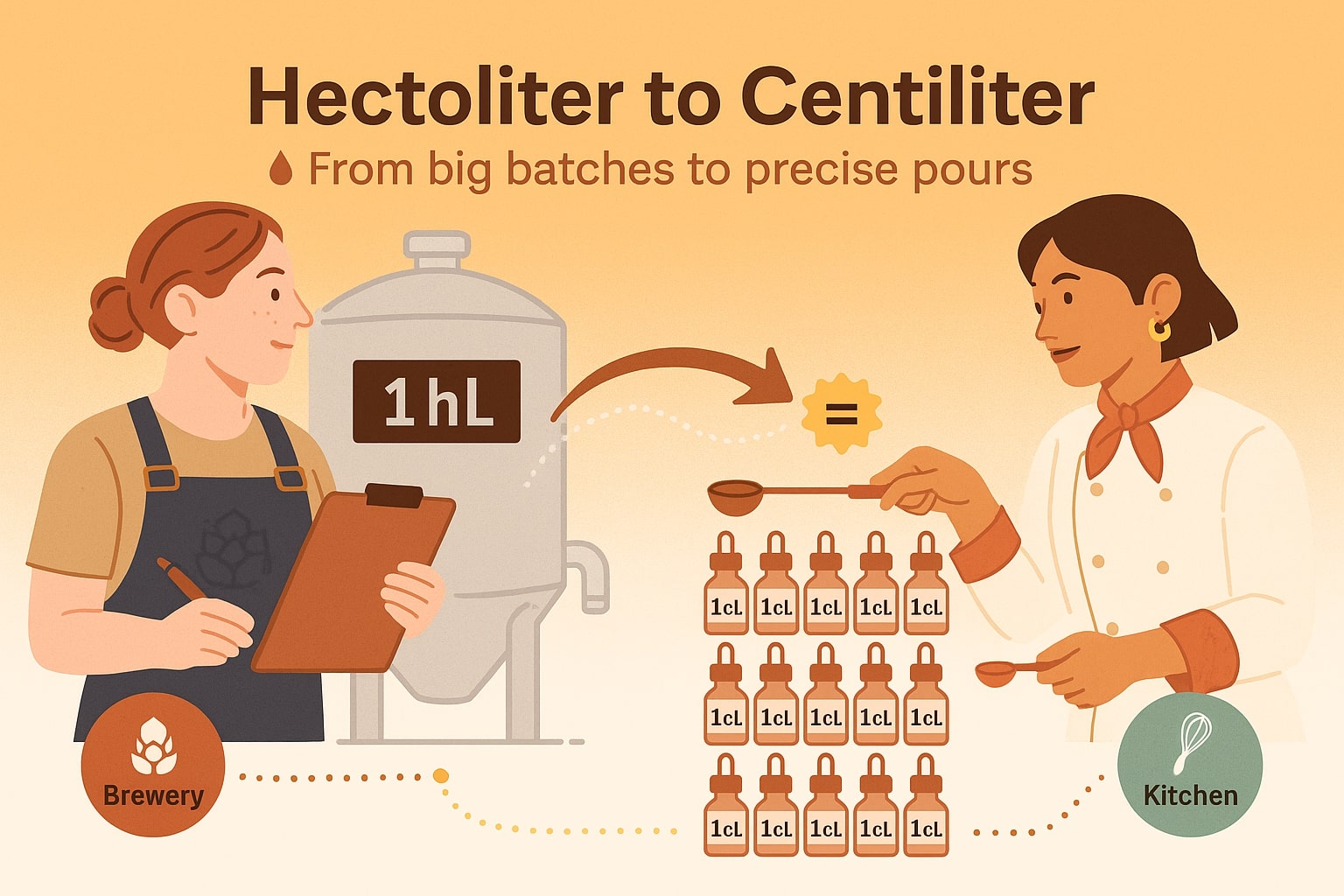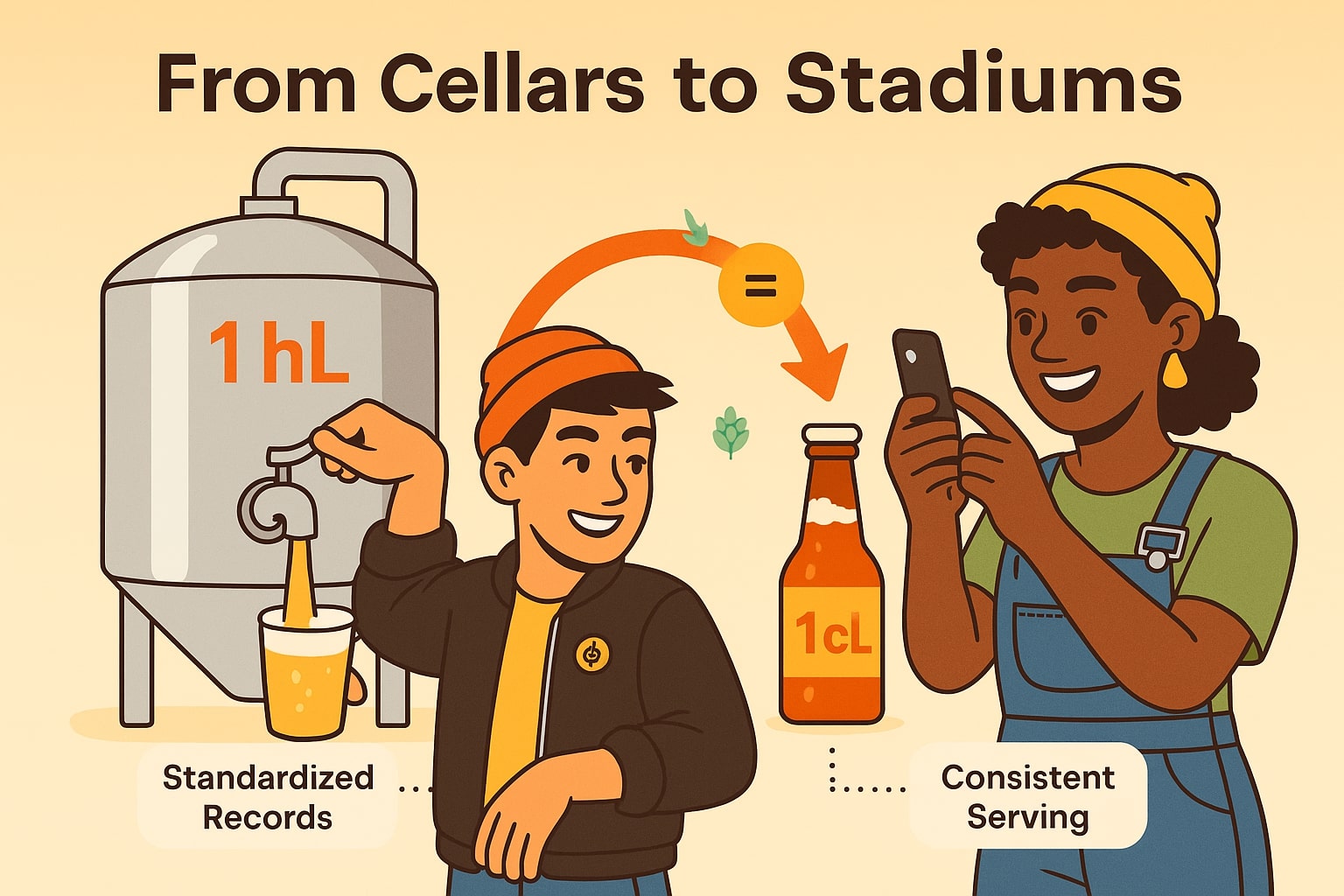Hectoliter to Centiliter – How to convert hL to cL
Need to switch from hectoliter to centiliter for a recipe, brewing project, or industrial calculation? These two units sit at opposite ends of the metric liquid measurement spectrum, but they’re part of the same system, so converting between them is quick and painless. Below, we’ll cover the math, reveal some fun facts, and show you how this conversion shows up in the real world.

What is a hectoliter (hL)?
A hectoliter (hL) is a metric unit of volume equal to 100 liters. It’s commonly used in brewing, wine production, and agriculture, where liquids are stored or sold in large batches.
For example, European breweries often measure beer output in hectoliters rather than barrels or gallons, because it scales nicely without leaving the metric system.
What is a centiliter (cL)?
A centiliter (cL) is a much smaller metric unit, equal to 1/100 of a liter (0.01 L). It’s common on European drink labels, especially for spirits and syrups, and in recipes where precision matters for flavor balance.
One centiliter equals 10 milliliters (mL), making it a handy unit for both cooking and bartending.
How to convert hectoliter to centiliter
The relationship is direct, thanks to the metric system:
1 hectoliter = 10,000 centiliters (1 hL = 10,000 cL)
To convert:
Centiliters (cL) = Hectoliters (hL) × 10,000
Example: If a brewery produces 35 hL of beer:
35 × 10,000 = 350,000 cL
Don’t want to crunch the numbers? Use our Volume Converter or browse other Conversion tools for instant results.
Did you know?
-
The average beer keg in Europe holds about 50 liters, or 0.5 hL, which is 5,000 cL – enough for around 140 half-pint pours.
-
A standard bottle of wine (750 mL) contains 75 cL, meaning it would take 1,333 bottles to equal a single hectoliter.
-
The largest wine barrel ever built, in Heidelberg, Germany, has a capacity of 219,000 liters, or 2,190 hL, which equals 21.9 million cL.
-
In France, many cocktail recipes are measured in centiliters rather than milliliters, making it easier to scale drinks for bars and events.
From Cellars to Stadiums: The Unit That Grew with Beer
In the 19th century, as European breweries expanded, traditional units like barrels and pints made trade confusing across borders. According to The Oxford Companion to Beer, many breweries shifted to hectoliters to standardize their records, since 1 hL could easily be broken down into liters or scaled up for exports.
When breweries began labeling products for retail in the 20th century, centiliters became the norm on bottles – offering precise serving sizes and simplifying pricing across different countries. This dual use of hL and cL made beer production and sales more consistent and transparent throughout Europe.

Wrapping It Up
Converting hectoliter to centiliter is as easy as multiplying by 10,000. Whether you’re a brewer, bartender, chef, or just curious about how these two units connect, knowing this conversion helps keep every measurement accurate.
For quick and precise calculations, try our Volume Converter or explore other Conversion tools to simplify any conversion task.

